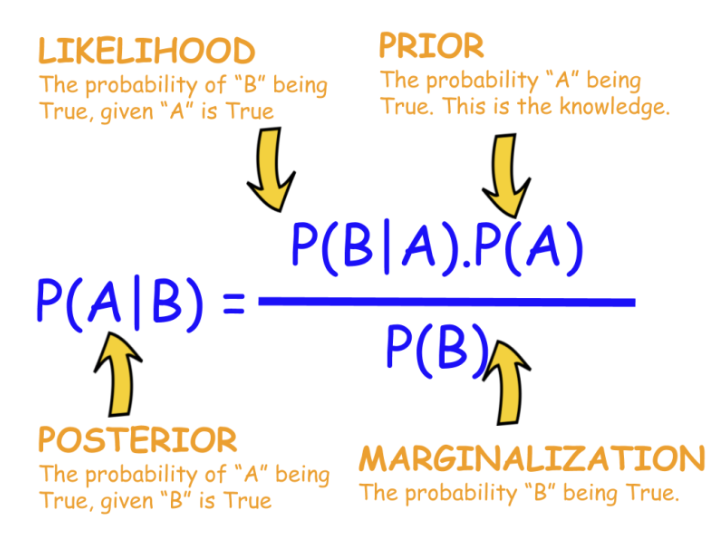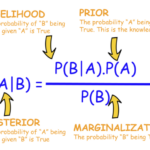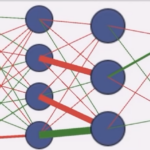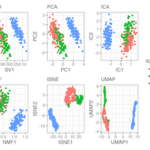In Bayesian analysis, the statistical inferences for datasets are updated each time additional data is included. Algorithms under Bayesian classification are based on Bayes’ theorem. Bayesian classifiers are the statistical classifiers.
- Naive Bayes: This is a set of supervised learning algorithms based on applying Bayes’ theorem with the “naive” assumption of conditional independence between every pair of a feature.
- Gaussian Naive Bayes: Here, continuous values associated with each feature are assumed to be distributed according to a Gaussian distribution. A Gaussian distribution is also called Normal distribution.
- Multinomial Naive Bayes: This is mostly used for document classification problem, i.e., whether a document belongs to the category of sports, politics, technology, etc. The features/predictors used by the classifier are the frequency of the words present in the document.
- Averaged One-Dependence Estimators (AODE): It’s a fast and accurate algorithm based on the average of probabilistic estimates.
- Bayesian Belief Network (BBN): It’s a graphical model that represents the probabilistic relationships among a set of variables.
- Bayesian Network (BN): It’s a probabilistic graphical model that represents a set of variables and their conditional dependencies via a directed acyclic graph.






